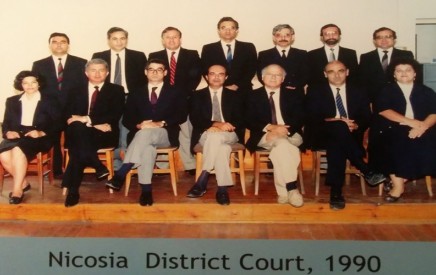Minimizing Accountability: Regulating White Collar Crimes

Such crimes has been describes as “a crime committed by a person of respectability and high social status in the course of their occupation” or “the violations of the law committed by a person in the course of a respected and legitimate occupation or financial activity”.
Contrary to other professions, corporate or financial entities confides essentially to search for gain, which can easily been turned into greed. Therefore, chances are the offender is allured into exploiting his or her occupational position.
There has never been a greater need to impose the high standards of conduct which equity demands on those who participate in commerce since the past years have shown a perpetual increase in White Collar Crimes and regulatory enforcement activities.
Serious concerns have been raised about the manipulation of benchmarks, which can result in significant losses to consumers and investors, or distort the real economy. Likewise, market manipulation, insider dealing, exploitation and embezzlements of funds also subvert the integrity of financial markets. The above does not constitute an exhaustive checklist of White Collar Crimes.
At the outset, many White Collar Crimes does not result from deliberate misconduct, but from rational actors ensuing incentives in circumstances with complex interactions.
It is crucial to understand why White Collar Crimes occurs, prior to undertaking reasonable preventive measures.
Some of the elements found in the occurring of such crimes are, pressure, opportunity, incentive and rationalization.
More precisely, regarding pressure, is one of the most confounding dilemmas of business life appears when a person become aware of questionable behavior by others or is pressured to engage in it. Some surveys have shown that employees have received “explicit instructions” from their superiors or felt organizational pressures to do things that they thought were unethical or even illegal. Further surveys have illustrated that there were employees that have been rewarded for taking some action that they considered to be “ethically troubling” and a relatively high percentage of those who refused to act in such “ethically troubling” actions believed that they were penalized in a way. Such an employees did not actually believed that their superiors or their organizations in general were corrupt. The cause might have been an acute pressure to attain a job, but be overriding ethical and even legal restraints.
Additionally, some organizational factors play an important role in the occurring of a White Collar Crime. Even if such a crime is mainly attributable to a lone individual, some of the most common infringements are commuted by an organization in which many people are subsidizing or advancing to a result that no one intents or even foresees. Further, infringements can also be found in an organization when responsibility is diffused among many individuals. In some instances, it is difficult to identify a person or a decision as the source of an act, and the infringement can be imputed only to the organization as a whole.
Such organizational infringements are often due by segregated decisions about different matters, often on the basis of assorted and conflicting information. Such decisions are not instantly taken, but gradually over a period of time. Thus, their full ambit is not readily apparent.
Moreover, all organizations direct and motivate employees by means of incentives, which may bring unintended results. Inadequately incentives plans may bring employees in a wrong direction. On the other hand, depraved or exceedingly powerful incentives are the seed course of many White Collar Crimes.
Likewise, another kind of incentive problem advances when employees or organizations obtaining interests that impede with the ability to serve the interest of others when they have a duty to do so. For example, when a broker is obliged to suggest only suitable investments for a client but is reimbursed more for some investments that others, a personal interest may lead the broker to fail in the duty to serve the client. Therefore, the existence of a personal interest inventive violates the obligation to serve the interest of another and consequently amount to the salient incentive problem of the conflict of interest.
Also, organizational factors are often colliding by leadership. Leaders of corporate firms can be accountable for the environment of which a White Collar Crime takes place. Some would argue that hardly a character of a specific person fully justifies a White Collar Crime. Unethical business practice is associated with the tacit participation of others and echoes the value, attitudes, beliefs, language and behavioral patterns that construe an organization’s operating culture. In like manner, some would argue that leaders who fail to administer proper leadership and to inaugurate systems that promote ethical conduct, share accountability with those who discern, execute and knowingly benefit from corporate infringements.
In a like manner, scholars that have studied White Collar Crimes explored how companies can fabricate an environment that discourages it, concluded that while compliance and regulatory systems are important, leadership plays a pivotal role in forming an organization’s attitudes toward preventing corporate crimes and its responses when infringement is detected.
Further, in order to combat this epidemic, regulatory authorities had to increase enforcement efforts through a variety of measures.
Especially, the aftermath of the Banking and Financial Crisis that emerged the previous years manifested the importance of ensuring that regulators have at their disposal competently robust and exhaustive powers to discharge their functions effectively.
Undoubtedly, further reform was needed on regulatory powers and corporate offences. In order to be fully effective, regulators should have had a principal regulatory set of tools, including the power to impose significant sanctions.
However, in practice, increased regulation, controls, and the strict enforcement of the recent regulatory amendments alone do not assure tat corporate crimes are detected early ore averted.
Accordingly, the optimum solution to corporate crimes would be prevention. Nowadays, corporate entities, since they are obligated, invest heavily in compliance advocating no illegal behavior, by ‘putting in place’ adequate procedures or setting social norms in order to prevent the facilitation of corporate ill structure and managing the risk of misconduct.
In its universal application, compliance signifies a path to regulation. The aim is that corporate entities work in an efficient way so they satisfy the set of rules or requirements. Because of the growing necessity of the society to run with clarity, institutions are endorsing the consolidated versions of guidelines.
Regarding the high level of commitment, there are some rather unequivocal methods that can aid in combating such crimes and more specifically illicit employee behaviour. Such as, (a) executing a board resolution of a zero tolerance approach to corporate crimes (e.g. bribery, tax fraud); (b) disseminating an all-staff memo about the entity’s approach on corporate infringement; (c) Designating and properly resourcing, legal and/or compliance staff who will be responsible to manage and monitor the procedures, under the utmost supervision of the manager.
Another idea is to adopt an up-to date written risk assessment that covers the principal risk areas of corporate crimes, who are the ‘associated persons’ that could put the entity at risk and actual examples of historic corporate infringements etc. This is in order to ensure that the program is duly tailored to the actual risks faced in conducting the entity’s business.
Following the risk assessment actions, steps regarding written policies can be taken. More precisely, adjusting of policies in order to deal with the risk profile of the entity. In addition, the senior manager could convey the policies to all staff and even make more readily available in electronic and/or hard copy form of all the policies.
At the leading edge, the providing of training (especially aligned with the key legislation) should be given in all the staff. Either via e-learning or carried out by a skilled and experienced trainer.
Lastly, the above ideas do not of course ensure the extinction of White Collar Crimes, since the high profile individuals within a company execute most of these crimes. However, it goes without saying that by creating a culture that encourages personnel to act ethically and legally, could minimize or prevent some of the corporate crimes been carried out nowadays.
Since, it is evident that many of the moral norms are embodied in laws and regulations, which are enforced by prosecutors and regulators, first by shaping the laws and regulations and second by guiding conduct in areas not governed by laws and regulations. It is not by chance that in countries with well developed legal systems much of what is unethical is also illegal and thus the law is continuously altering and further expanding in order to align ethics and law more closely.
It is of a high importance for a company to promote some of the above norms and their organizational integrity. Such institutions will continue to be highly inspected by the law enforcement agencies. Therefore, the best protection is to take proactive steps to prevent misconduct. In the light of the above, leaders should continue to invest in strong compliance systems, hire experienced compliance personnel, acquiring improved surveillance technology for prospective compliance lapses and more importantly setting a clear tone of zero tolerance for immoral activities.








